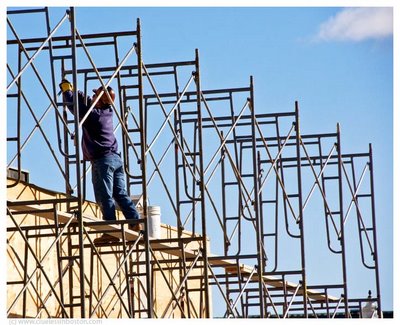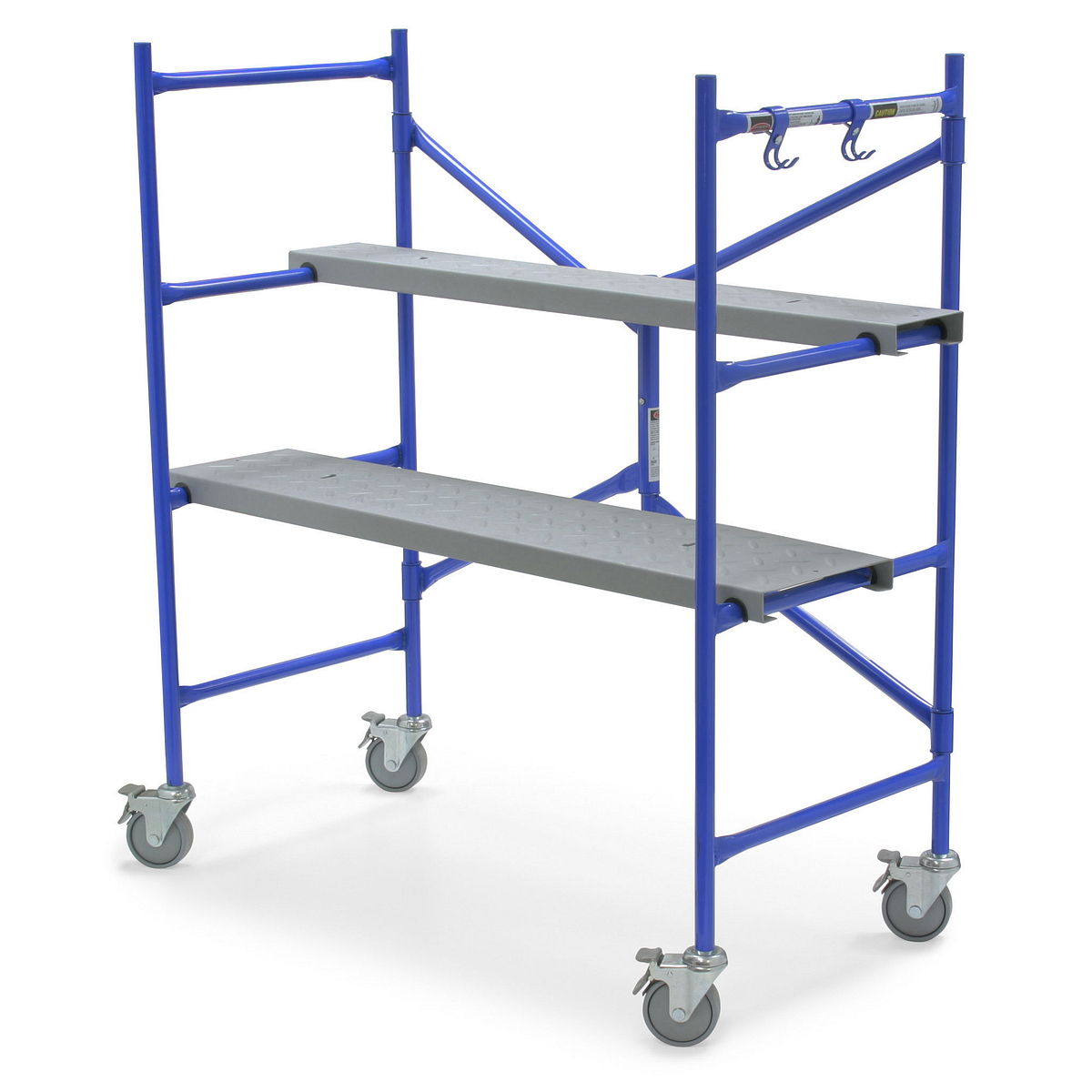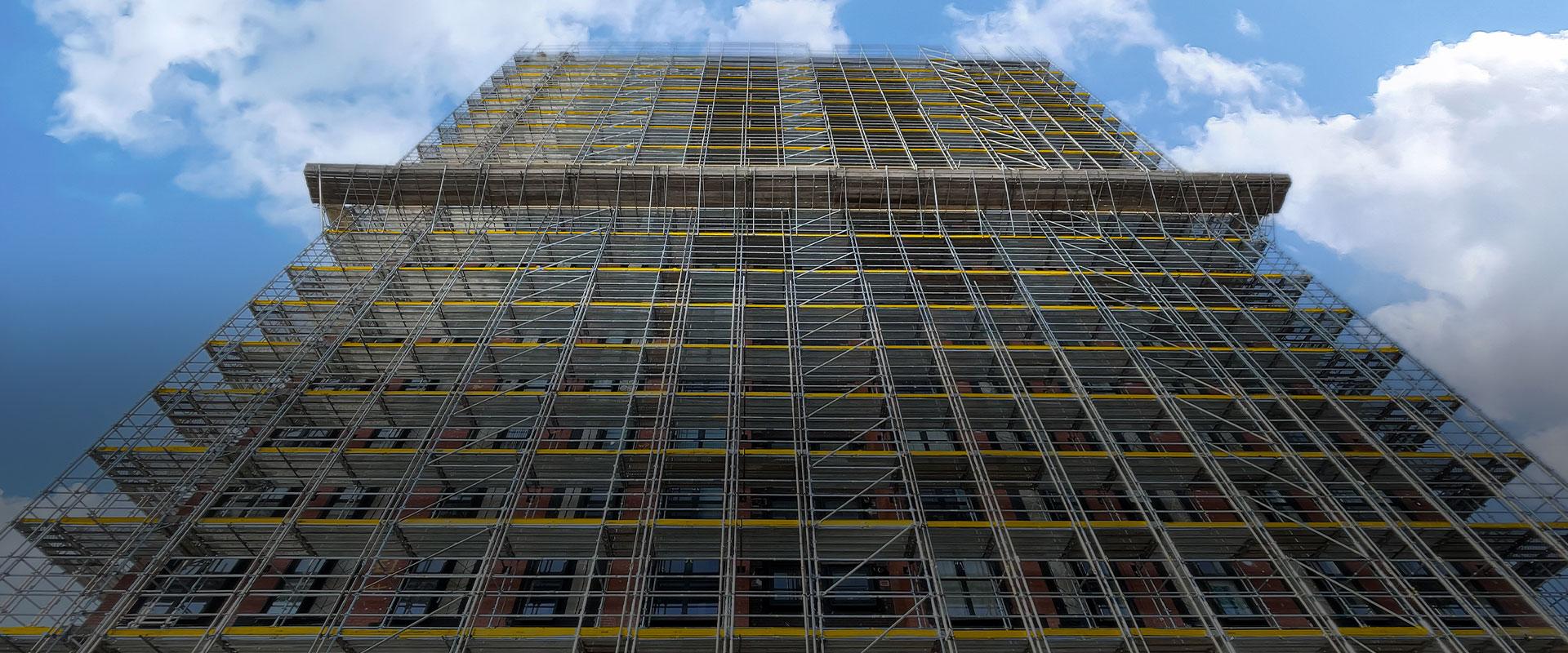Dependable Domestic Scaffolding for Homeowners in Need of Safe Renovations
Checking Out the Various Kinds Of Scaffolding Utilized in Building And Construction Tasks
The building and construction sector relies heavily on various types of scaffolding to meet details task requirements, each offering distinct benefits and applications. Standard framework scaffolding offers a sturdy structure for basic tasks, while suspended scaffolding is vital for work on skyscraper structures. Various other choices, such as system and rolling scaffolding, satisfy effectiveness and wheelchair, specifically. The cantilever variant confirms indispensable in urban environments where room is constrained. Comprehending the nuances of these scaffolding kinds is crucial for optimizing safety and security and efficiency on building websites, triggering a closer exam of their distinct characteristics and applications.

Conventional Framework Scaffolding
Typical structure scaffolding is one of the most commonly utilized methods in the construction sector as a result of its effectiveness and flexibility. This system contains vertical and horizontal structures that are set up to produce a stable system for employees and materials. The primary parts include vertical posts, straight ledgers, and diagonal dental braces, which together provide a strong framework that can support significant lots.
Among the essential benefits of conventional structure scaffolding is its adaptability to different construction jobs, varying from domestic structures to large industrial frameworks. The modular design permits very easy assembly and disassembly, making it effective for both temporary and lasting tasks. Additionally, the system can be personalized in elevation and size, fitting various structure designs and site problems.
Security is critical in scaffolding applications, and typical frame systems are geared up with guardrails and toe boards to stop drops and make sure worker defense. Additionally, routine assessments and adherence to safety and security regulations are vital in keeping the honesty of the scaffold. Overall, traditional frame scaffolding remains an essential option in the building and construction industry, supplying a trusted platform for labor and boosting total task efficiency

Suspended Scaffolding
Suspended scaffolding offers an unique solution for construction projects that need access to elevated surface areas, specifically in situations where conventional frame scaffolding might be unwise. This kind of scaffolding is commonly put on hold from the roofing system or top levels of a framework, using a system of platforms, ropes, and wheels to create a functioning room that can be adjusted to numerous heights.
One of the main advantages of put on hold scaffolding is its flexibility. It can be quickly rearranged or lowered to fit changes in building and construction needs, making it excellent for tasks such as home window installation, frontage job, and maintenance on skyscrapers. Additionally, the very little impact of put on hold scaffolding permits far better use of ground space in metropolitan environments, where area is often restricted.
Safety and security is a vital factor to consider in making use of suspended scaffolding. Correct rigging and securing systems must be utilized to make sure stability and avoid crashes. Operators must also be learnt the secure usage of this equipment. In scaffolding strategies general, put on hold scaffolding gives a reliable and effective service for accessing hard-to-reach areas in different construction circumstances, boosting both productivity and safety on site.
System Scaffolding
System scaffolding, typically considered a contemporary option in the scaffolding industry, consists of pre-engineered parts that can be promptly constructed and adjusted for different building projects. Scaffolding. This kind of scaffolding is characterized by its modular layout, which permits convenience and performance on task sites, fitting different heights and architectural demands
Generally made from high-strength steel or aluminum, system scaffolding supplies improved sturdiness and stability. The parts include vertical blog posts, straight ledgers, and angled braces, which interconnect firmly, guaranteeing a durable framework. The layout commonly integrates standardized fittings, streamlining assembly and disassembly procedures, thus reducing labor time and expenses.

Rolling Scaffolding
Moving scaffolding is a flexible option to standard set scaffolding, look at more info created for wheelchair and convenience of usage on building sites. This sort of scaffolding contains a system sustained by structures with wheels, permitting employees to quickly move it as needed. The movement feature considerably enhances productivity, as it minimizes downtime associated with assembling and taking apart dealt with scaffolding.
Commonly created from light-weight materials such as light weight aluminum or steel, rolling scaffolding uses a durable yet portable option for jobs requiring regular repositioning - Scaffolding. It is especially advantageous in jobs such as painting, drywall setup, and electrical job, where access to various elevations and areas is required
Safety and security is extremely important in rolling scaffolding style, with features such as securing wheels to avoid unplanned motion when being used, and guardrails to secure employees from falls. In addition, lots of models are adjustable in elevation, fitting various task needs.
Cantilever Scaffolding

The design of cantilever scaffolding generally involves using arms or brackets secured to a structure or structure, allowing the platform to expand exterior securely. Safety is vital; hence, these scaffolds have to be crafted to hold up against numerous tons and environmental conditions. Normal assessment and maintenance are vital to ensure architectural stability and worker safety and security.
Cantilever scaffolding is preferred for its flexibility and efficient usage of area, making it a prominent choice in city atmospheres where space restraints are typical. Furthermore, it facilitates less complicated access to high altitudes, eventually contributing to the total effectiveness of building and construction jobs. As with all scaffolding kinds, appropriate training and adherence to safety and security requirements are critical for employees utilizing cantilever scaffolding.
Final Thought
Traditional frame scaffolding offers stability, while suspended scaffolding provides adaptability for raised tasks. System scaffolding facilitates quick assembly, and rolling scaffolding improves wheelchair for varying work atmospheres.
Standard framework scaffolding supplies a durable foundation for general tasks, while put on hold scaffolding is essential for job on skyscraper frameworks.Rolling scaffolding is a versatile alternative to traditional set scaffolding, made for flexibility and convenience of usage on building sites. As with all scaffolding types, correct training and adherence to safety and security requirements are vital for workers utilizing cantilever scaffolding.
Typical structure scaffolding offers stability, while put on hold scaffolding provides flexibility for raised tasks. System scaffolding helps with fast setting up, and rolling scaffolding enhances mobility for differing work settings.